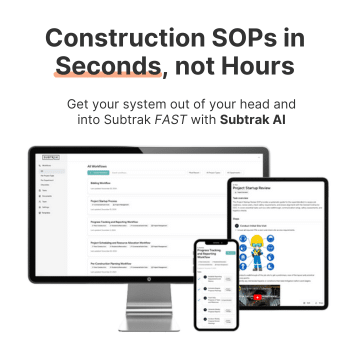Payroll Processing for Electrical
The Payroll Processing workflow provides electrical contractors with a reliable method for handling wages and benefits. It includes verifying labor hours, reviewing overtime, applying deductions, and preparing payroll reports. Supervisors confirm accuracy, and managers process paychecks or direct deposits. By following this workflow, electrical companies reduce errors, ensure compliance, and protect profitability. Clients benefit from motivated crews compensated fairly. Teams gain accountability through transparent payroll practices. With this workflow in place, electrical contractors can strengthen professionalism, improve efficiency, and deliver projects more reliably while maintaining accurate financial records and legal compliance.
Confirm all approved timecards have been received by the deadline
Review timecards for accuracy (regular time, overtime, PTO, holidays)
Enter or import hours into payroll software or system
Verify employee wage rates, tax withholdings, and deductions
Calculate gross pay, deductions, and net pay for each employee
Review payroll summary for errors or red flags
Get final payroll approval from designated manager or owner
Process payroll via direct deposit or paper checks
Generate and distribute pay stubs to employees
Submit tax withholdings, garnishments, and benefits contributions
Update payroll records in HR or accounting systems
Respond to employee questions or corrections promptly
File payroll reports and maintain compliance documentation
Schedule reminders for next payroll cycle and tax deadlines
👈 Use this SOP template inside Subtrak
Edit with AI. Customize in seconds. Store and share all your SOPs and checklists in one place.
